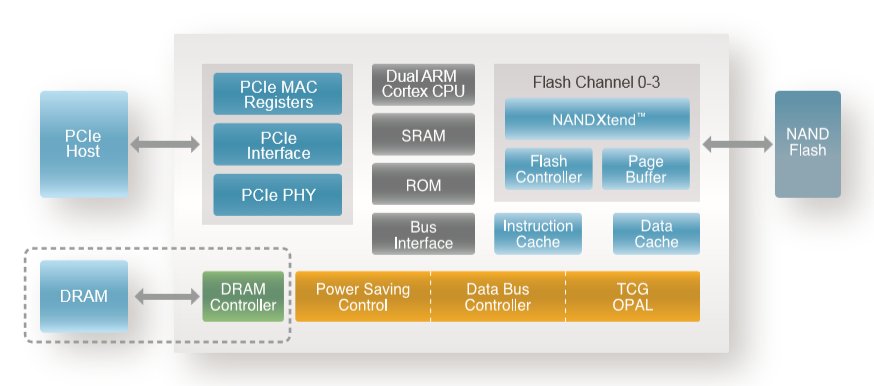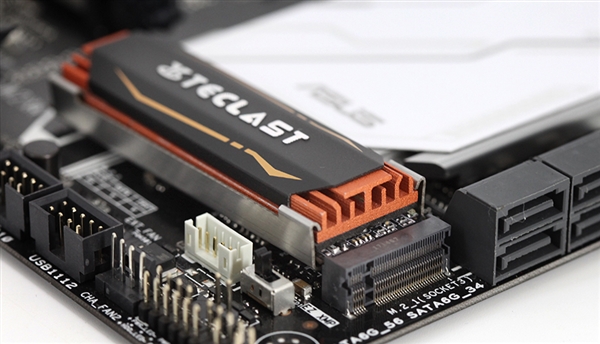Silicon Motion SM2263XT HMB SSD Preview
Conclusion
Frankly, DRAM-less SSDs are not my favorite topic. It was fun to break the story and write the first review of a retail DRAM-less SSD, but it quickly took the wind out of our sails when we wrote an eleven-drive roundup and couldn't recommend a single product. At the time, we hoped DRAM-less SATA SSDs would die off faster than 3D TVs and nausea-inducing VR.
Host Memory Buffer technology looks to change that perception. We had our first look at the new technology a few years ago during a presentation, but the company didn't even have a working drive. A year later, the same company actually powered up the drive, and other companies began showing their devices. Until this week, the little we knew about Host Memory Buffer performance consisted of the same Crystal Disk Mark image shared over and over for the last two years. Due to the prolonged industry silence, we naturally assumed there was an issue somewhere in the chain, be it on the drive or host side.
That made our test results even more surprising. We didn't anticipate or even remotely expect the SM2263XT to deliver this much performance. Now we understand why SMI is so excited, and we can even get a little giddy, too.
But the real excitement for us will come when we see retail pricing. We already know the NAND shortage is coming to an end, so prices are declining. Some analysts say the NAND shortage is already over. That's a bit short-sighted considering a $40 price drop in the 1TB class isn't exactly a revolution, but deeper cuts will come.
We were critical of the SM2260 and SM2258 controllers because SMI had to pair the controllers with less-than-ideal first-gen 3D NAND. Then Crucial strapped its second-generation 3D NAND to the SM2258, which improved both performance and latency.
We've seen other HMB-enabled devices at trade shows, but we haven't tested them in our lab. We were beginning to think that companies were intentionally hiding HMB devices from our testing. Given the results we're seen thus far with the SM2263XT, that wouldn't make a lot of sense. We have yet to see or hear about companies shipping notebooks or other systems with the existing Marvell or Toshiba HMB-enabled controllers, so they may not be ready for scrutiny just yet.
One Chinese company has already announced a high-end SM2262-based SSD, and more established global brands will put their cards on the table by early January. SMI has competitive SATA controllers, but the company is dedicating most, if not all, of its resources to the new NVMe controllers. Each controller has a dedicated firmware team, so the controllers are advancing rapidly. We suspect we will see some retail products in American and European stores by late February.
Get Tom's Hardware's best news and in-depth reviews, straight to your inbox.
We only tested the entry-level SM2263XT, but performance looks strong throughout the lineup. The SM2263XT's performance already approaches the Samsung 950 Pro. Assuming the small performance gap closes by the time drives come to market, I don't know anyone who would pass by 950 Pro performance at an entry-level price point. Considering the small performance delta between the HMB drive and faster options, it would be difficult to recommend the more expensive options. The return on investment is too small unless you commonly use workstation-class applications.
There is one flaw with the SM2263XT: the controller can only scale to 1TB. Gamers want high burst performance, but they also want high capacities to go along with it. 3D NAND came with the promise of high capacities, but the industry still seems stuck in the mid-range.
We will have to look towards SMI's more ambitious NVMe controllers for the high capacity options, but for most of the market, the SM2263XT appears to deliver on the low-cost and high-performance promises.
MORE: Best SSDs
MORE: How We Test HDDs And SSDs
MORE: All SSD Content

Chris Ramseyer was a senior contributing editor for Tom's Hardware. He tested and reviewed consumer storage.
-
takeshi7 DRAM-less SSDs should have to advertise that in giant letters on their box so that consumers know to avoid them. Those mixed I/O numbers are pathetic.Reply -
WyomingKnott Is it correct that a 1 TB SSD will have 1 GB of DRAM, or is that a typo, or did I read it wrong? Sounds like a pretty big lookup table.Reply -
alextheblue Reply
The new gen HMB-capable DRAMless SSDs (with FCU or later) are good enough for most consumers. Also most PC users buy OEM boxes... I'd much rather see users offered a machine with HMB DRAMless SSDs than HDDs or non-HMB DRAMless SSDs.20609574 said:DRAM-less SSDs should have to advertise that in giant letters on their box so that consumers know to avoid them. Those mixed I/O numbers are pathetic.
Heck, for secondary storage (mechanical drive replacement, media storage) even QLC drives will be OK, so long as they're well-designed.
Newer hardware and operating systems allow PCIe devices to flag data headed directly to system memory. Even though the system memory and PCIe bus are on opposite sides of the CPU, the flagged data passes through the processor without adding parasitic load.
That answers the first question that came to mind. What are the requirements for direct-to-memory flag support? Is it only a question of PCIe version x.xx and OS + SSD support? -
Lutfij Found the time to read through this review. Very well written Chris, keep up the good work!Reply

